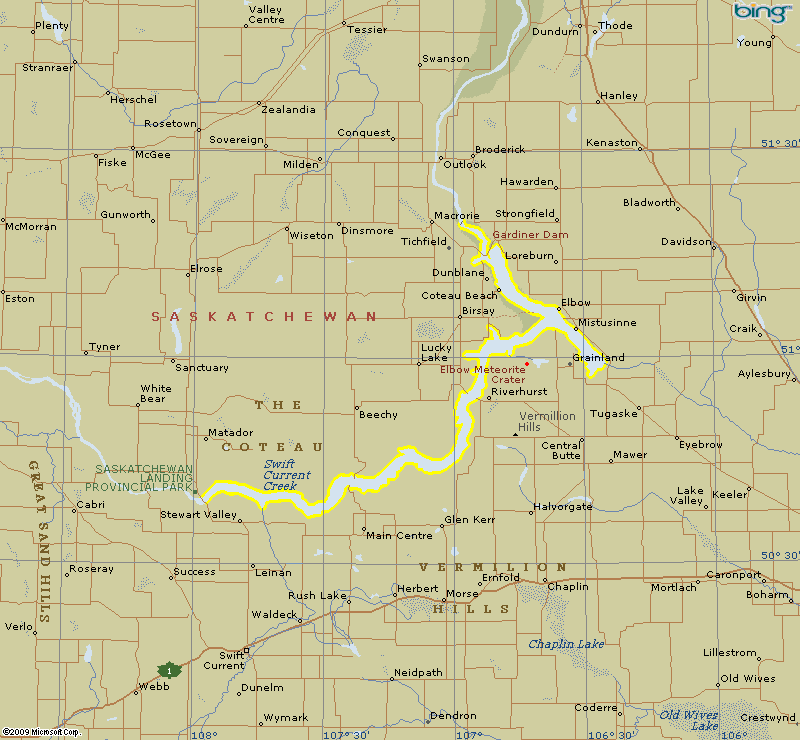The Lake Diefenbaker snowsquall of October 9, 2009
What happened
On October 9, 2009, a rare phenomenon occurred: lake-effect snowfall off of Lake Diefenbaker in southern Saskatchewan. This is rare is because of a) the depth (shallowness) of the lake and b) the fact that the wind orientation must be just right for the snowsquall to occur.
The depth of Lake Diefenbaker is, on average, about 25 metres and at its widest point the lake is about 3 km wide. This means that, with the onset of sub-freezing temperatures, the lake will be quick to freeze over and, moreover, when the thermodynamic setup is right for snowsqualls, the wind must be from exactly the right direction to get enough fetch to ingest the required moisture.
For this event, the setup was great: an unusually warm September gave way to a quick change to sub-freezing temperatures, and the wind set up so that it was from a perfect direction, about 305°.
Here's a map to show the orientation of the lake and from which you can ascertain the delicate nature of the conditions that must be achieved for snowsqualls to occur.

RADAR images
Email the webmaster
Last update to this page: October 11, 2009
